Mendelssohn at the Meistersaal
18 September 2022

Pioneering immersive audio recording with microphones from Sennheiser and Neumann
In July 2022, the Mahler Chamber Orchestra performed at the Meistersaal in Berlin – and the aim was to make a groundbreaking recording. Premium microphones from Sennheiser, including 24 MKH 800 TWIN as well as the new Neumann MCM system, played a key role in ensuring the ensemble was recorded in more detail than ever before.
To an observer, the scene might look a little strange. But the person who appears to be wandering erratically around the room has become immersed in a different world. Equipped with a VR headset and a set of Sennheiser headphones, the wearer can see and hear things that the other guests in the room can only imagine. Only when they have the opportunity to enjoy this exceptional immersive experience for themselves will they realise what all this is about: You can never get as close as this to individual string instruments at a concert without being thrown off the stage and quickly escorted to the exit by security guards…
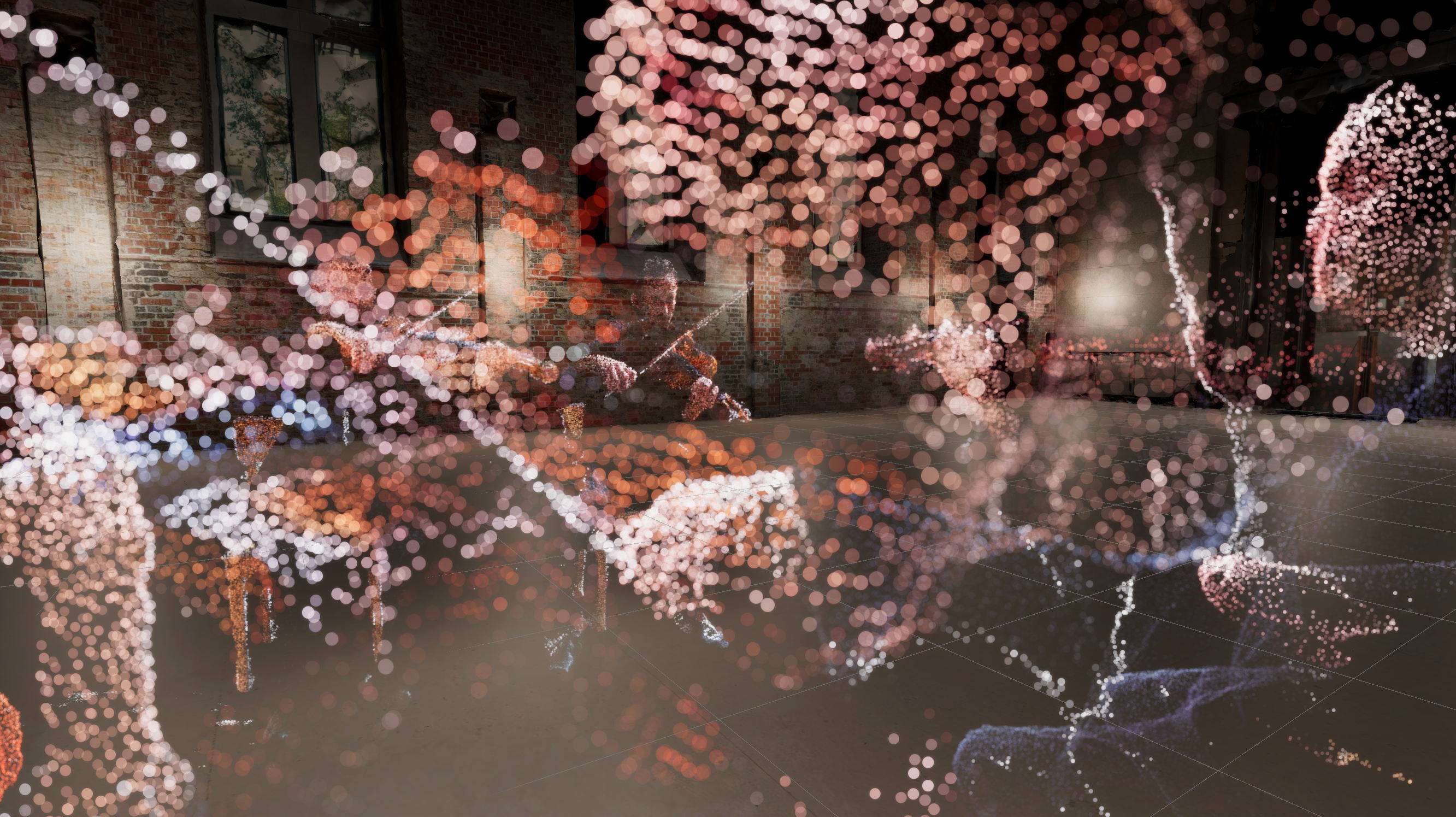.jpg)
More than the usual
The venue for this unusual event is a room adjacent to Berlin’s Meistersaal, where Henrik Oppermann, a widely acknowledged expert in 3D sound, the founder and director of Schallgeber (www.schallgeber.com) and Head of Sound at the Sennheiser AMBEO Immersive Audio Team, enables guests to become immersed in a world that he has designed – a world of the moving images and sounds of a Mozart string quintet. Right next door in the concert hall, the Mahler Chamber Orchestra is working on a perfect rendition of excerpts from Felix Mendelssohn Bartholdy’s “A Midsummer Night’s Dream”.

Taking a closer look around the Meistersaal, one will immediately notice the unusually large number of microphones that have been set up to record the sound. The reason is that Oppermann, together with the Mahler Chamber Orchestra, is trying out an experiment that will take both the renowned audio specialist himself and the classically trained musicians into completely new territory. Their goal is nothing less than to create a hitherto unknown type of sound experience in which the listener can move into any position in front of, behind or next to the musicians and listen to individual instruments or the entire ensemble in a way that has never previously been possible even for the musicians or the conductor, let alone normal concertgoers. It aims to convincingly reproduce the real sound field that existed during the recording in all its minute details, thus enabling the listener to move freely within the orchestra when listening to the recording.
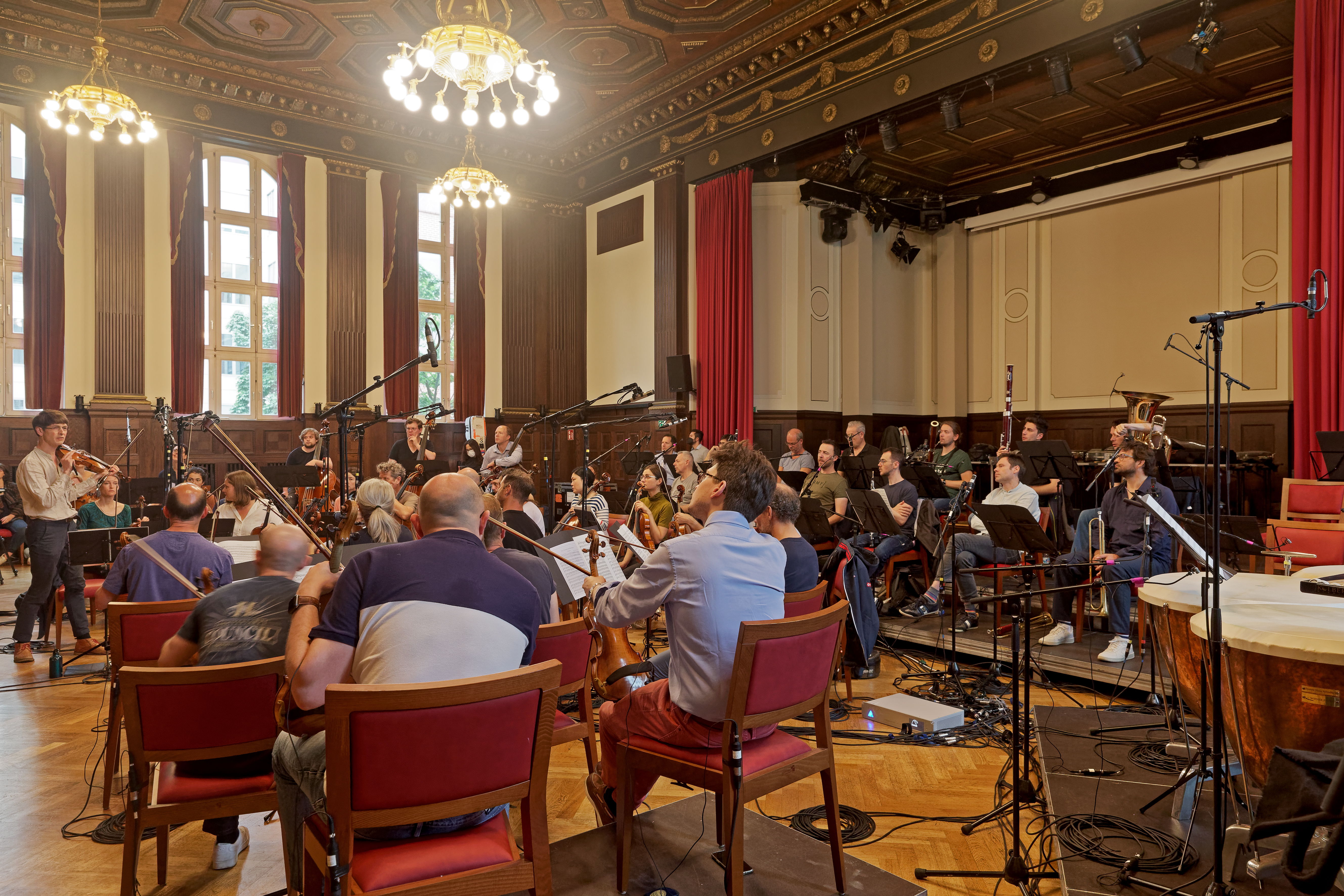
Oppermann promises to make listening to the Mahler Chamber Orchestra an immersive experience, and in keeping with this he is also the MCO’s Artistic Partner for Immersive Experiences. Oppermann has been working together with the orchestra since 2019 and, prior to these recordings at the Meistersaal, he already accompanied two recording sessions intended for VR processing. All three recordings are part of the “Future Presence” project; the idea for which came about during the restrictions caused by the Covid pandemic, which made it impossible to hold concerts in front of a live audience. The recording at the Berlin Meistersaal was funded by the Federal Government Commissioner for Culture and Media.
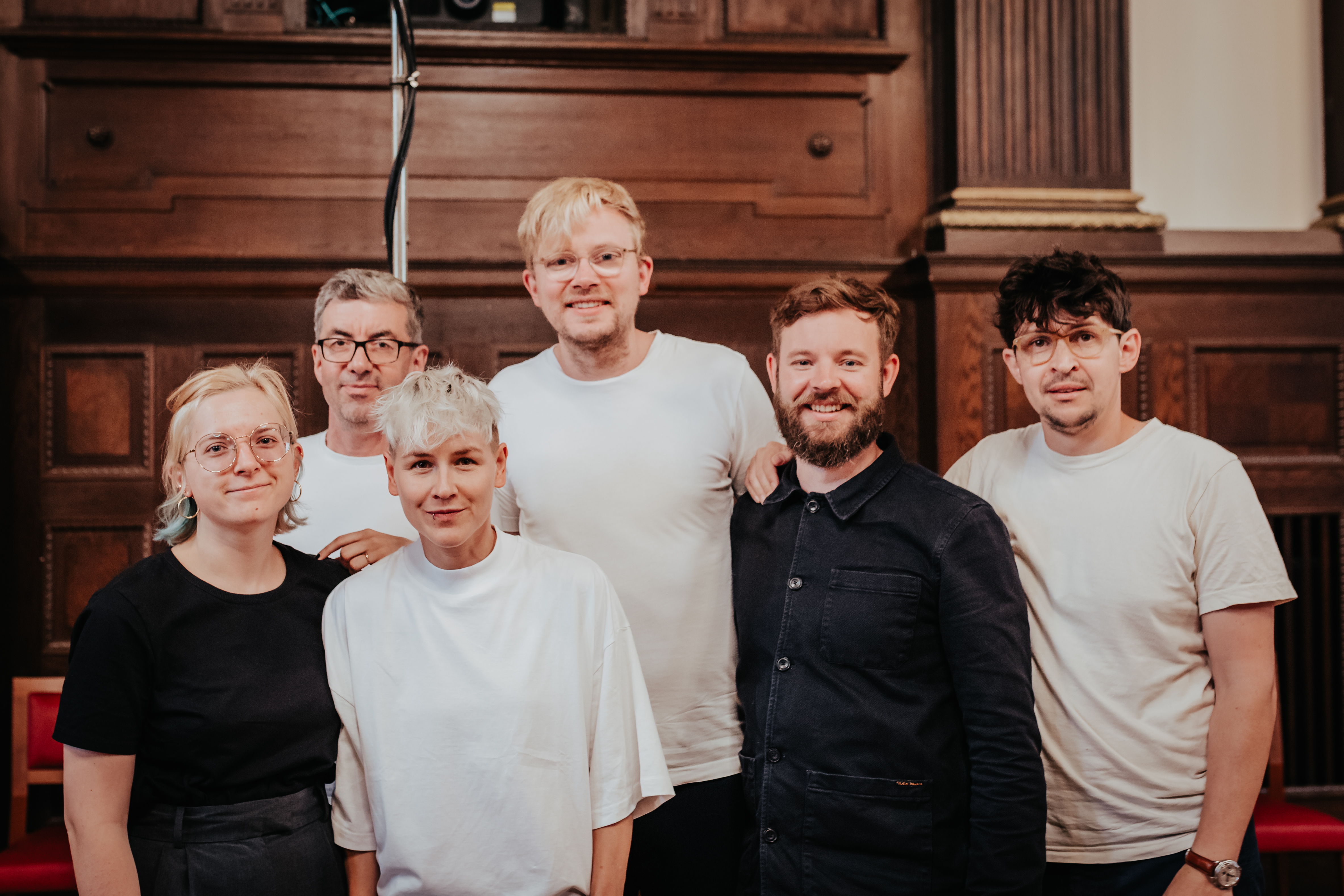
Berlin VR trilogy
The “Future Presence” project has three parts. In 2020, Mozart’s String Quintet in G minor was recorded at Berlin’s Kultur Büro Elisabeth, a former church, with five musicians from the MCO. This was followed in 2021 by a recording of Charles Ives’s “The Unanswered Question” at the same location, before the trilogy was completed in July 2022 with recordings of Felix Mendelssohn Bartholdy’s “A Midsummer Night’s Dream”.
The venue for the third part of the Berlin recording trilogy was the Meistersaal near Potsdamer Platz, a location also known in the pop and rock world as “The Big Hall by the Wall”, having been made famous by productions by David Bowie, Depeche Mode and U2. The MCO spent a total of five days at the legendary location, whose neoclassical ambience is characterised by a dark wooden coffered ceiling and historical chandeliers.
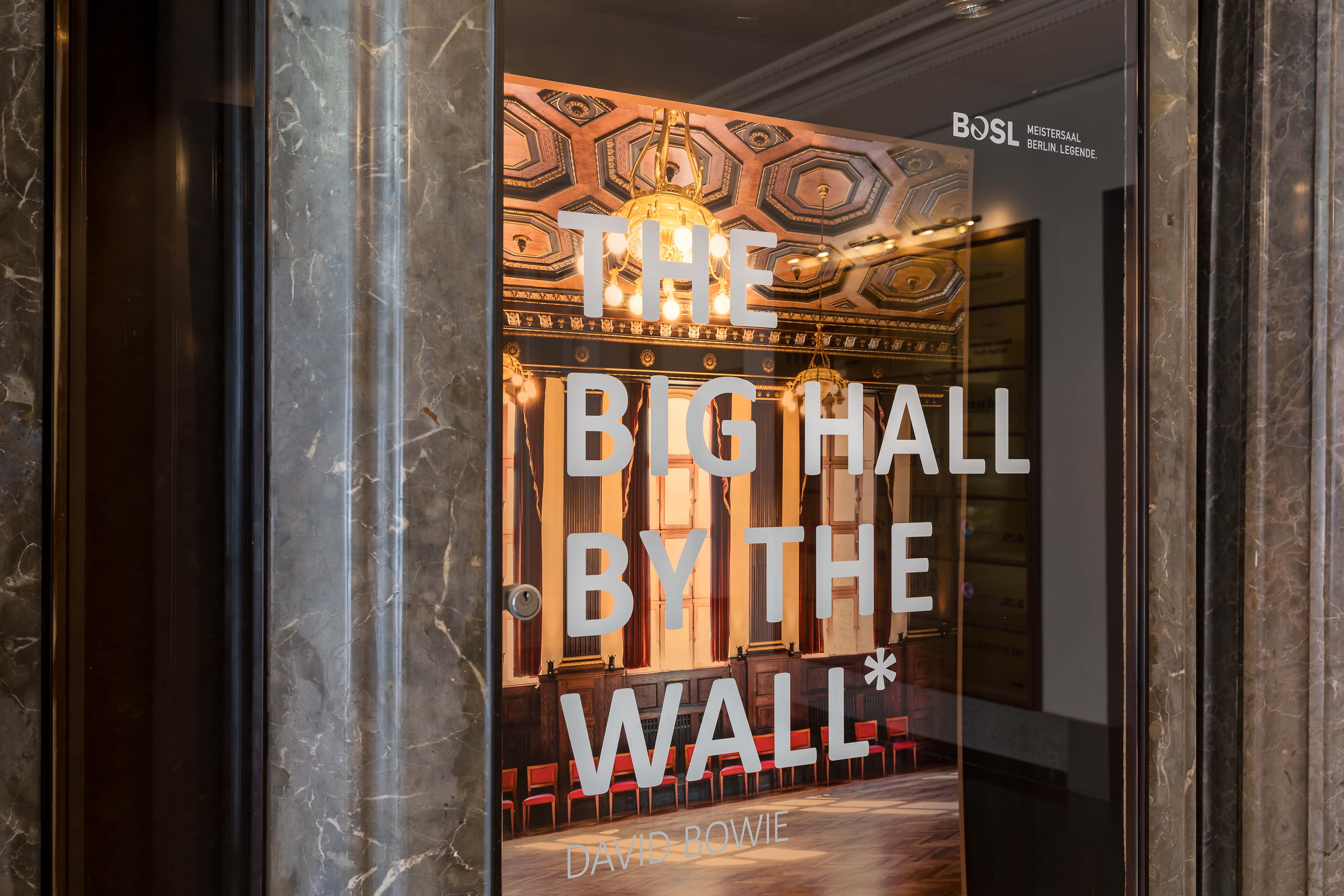%20MCO_005.jpg)
The Meistersaal has a floor space of 266 m2, is seven metres high and has a 28 m2 stage at its far end. Forty-seven musicians from the MCO took part in the recording, making use of all of the space available. The positions of the individual musicians corresponded to a typical concert setting – in other words there was no special seating arrangement for the recording.
“What makes the sound of the MCO so special is the process of strong communication through listening and reacting,” explains Maggie Coe, who is Director of Artistic Planning at the MCO and is responsible for tour planning as well as special projects and cooperations. “It is our goal to capture this sound in the VR recording and give the listener the opportunity to witness this process from a new perspective. Therefore, the orchestra is not playing any differently in these recordings than it would when playing a concert. Only like that can we offer a true MCO experience in virtual reality.”

Miking and signal path
The microphones used at the Meistersaal included 24 Sennheiser MKH 800 TWIN, seven Sennheiser MKH 8040, three Neumann KM 184 and 48 Neumann MCM systems. The microphones were connected to high-quality audio interfaces from Merging Technologies (two Horus with 48 mic inputs, a Hapi with 16 mic inputs, an Anubis as a D/A converter for monitoring with Neumann KH 80 DSP) that were placed among the musicians to keep the analogue cable lengths as short as possible and to avoid impairing the signal quality due to long cables. Neumann.Berlin has recently begun working together with Merging Technologies as part of the Sennheiser Group.

After pre-amplification and A/D conversion, digital audio signals were transmitted loss-free via network cables from the preamps to laptops set up in the foyer of the concert hall. The Reaper DAW software from Cockos Incorporated, which is extremely popular in the VR context, was installed on these laptops for carrying out the recordings. Oppermann had chosen 48 kHz as the sample rate, which is without doubt a sensible option for 112 recording channels with uncompressed digital audio material.

“When we made the quintet recordings at Kultur Büro Elisabeth, the musicians each had an MKH 800 TWIN microphone, which was also the set-up for The Unanswered Question,” says Oppermann. “A special feature of the MKH 800 TWIN is that it provides two signals at its output, which allows the polar pattern to be flexibly changed later during post-production. In my opinion, this extremely exciting possibility is far too seldom used in recordings.”
Morphing with the Sennheiser MKH 800 TWIN
The Sennheiser MKH 800 TWIN is a universal studio condenser microphone of exceptional quality. It includes a dual capsule consisting of two symmetrical push-pull transducers with high linearity. This is a side address microphone, with the two cardioid pick-up patterns of the transducers aligned back-to-back to the front and the rear. As a special feature, the signals of the two transducers are not combined in the microphone in order to generate different pick-up patterns, but are available separately as two channels at the microphone output. This allows the pick-up patterns of the MKH 800 TWIN to be adjusted remotely at the mixing console or even later in post production. The signals can be combined in any desired way in order to create all pick-up patterns from omni-directional to figure-8, with an infinite number of intermediate stages in between.
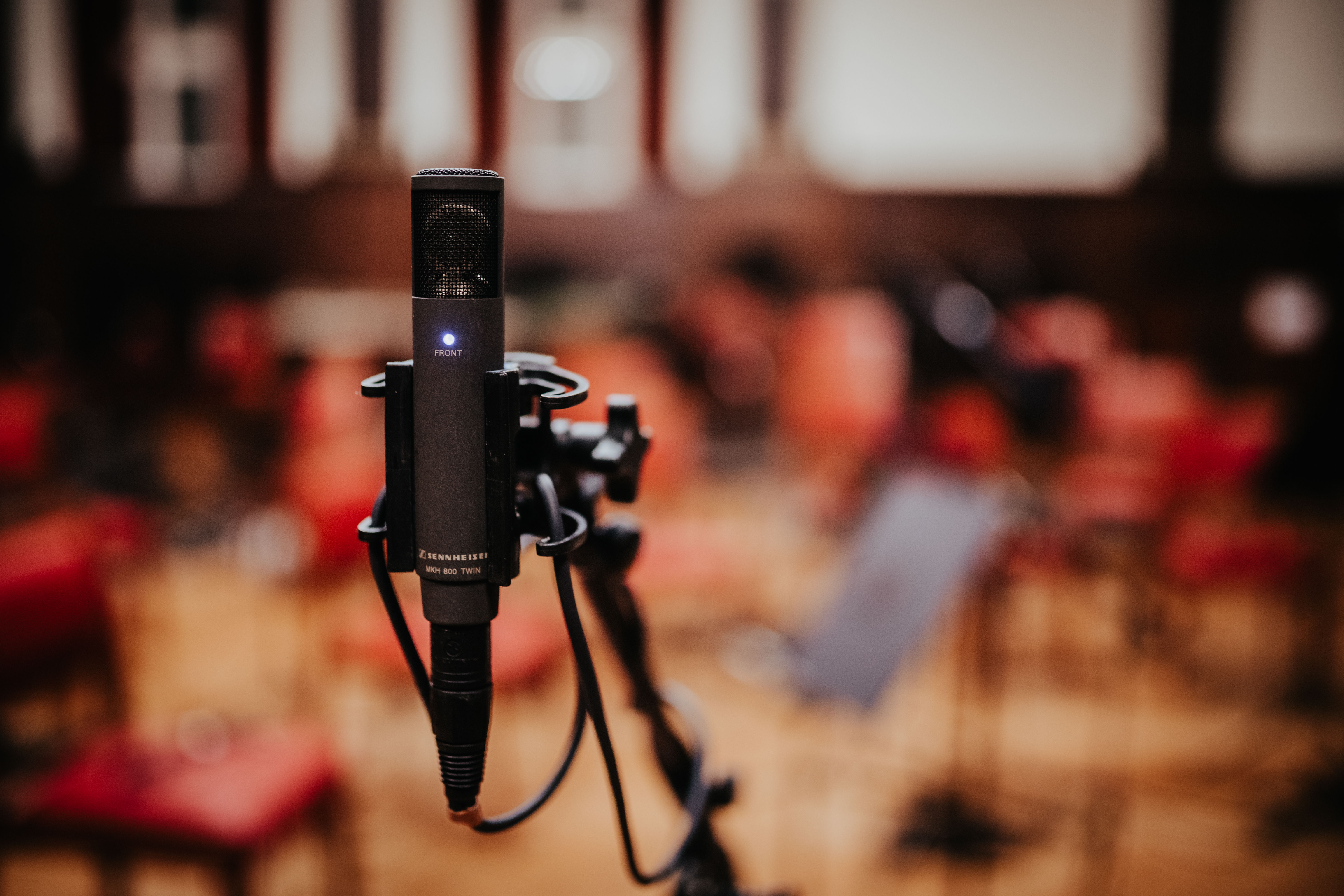
Oppermann explains: “In order to make six degrees of freedom possible, and therefore to enable listeners to move around individual sound sources in the recording, we feed the microphone signals into a game engine, where we can change the directional characteristics depending on the distance to the sound source. So, as a listener, when I’m close to the sound source, I can only hear the recording parts made with a cardioid pick-up pattern. This puts me really close to the action and I can hear, for example, how a violinist’s bow moves over the strings and can even hear the musician breathing.
“But if I move away from the sound source, the listening experience merges seamlessly into the recording made with an omnidirectional pick-up pattern. As a listener, I can then hear a realistic soundscape that includes more ambience and in which those details that can clearly be heard when I’m close to the instrument are now almost imperceptible and become part of the overall sound image.
“These transitions are as smooth as in a morphing process – it’s a fantastic way of representing distances in a VR context! My aim is to make this process behave exactly as it does in reality. Fortunately, the MCO allowed me to move as freely as I wanted to between the musicians during the rehearsals and to listen to the sound with my own ears everywhere. This experience serves as a reference for me, and I would like to transfer it to the digital experience.”
MKH and MCM
Oppermann says that he would actually have preferred to use a total of 47 MKH 800 TWIN for the third part of the trilogy (in other words, an MKH 800 TWIN for each musician), but this was not possible for logistical reasons. In the end, he managed to put together 24 units of the versatile Sennheiser high-end microphone for the recording.
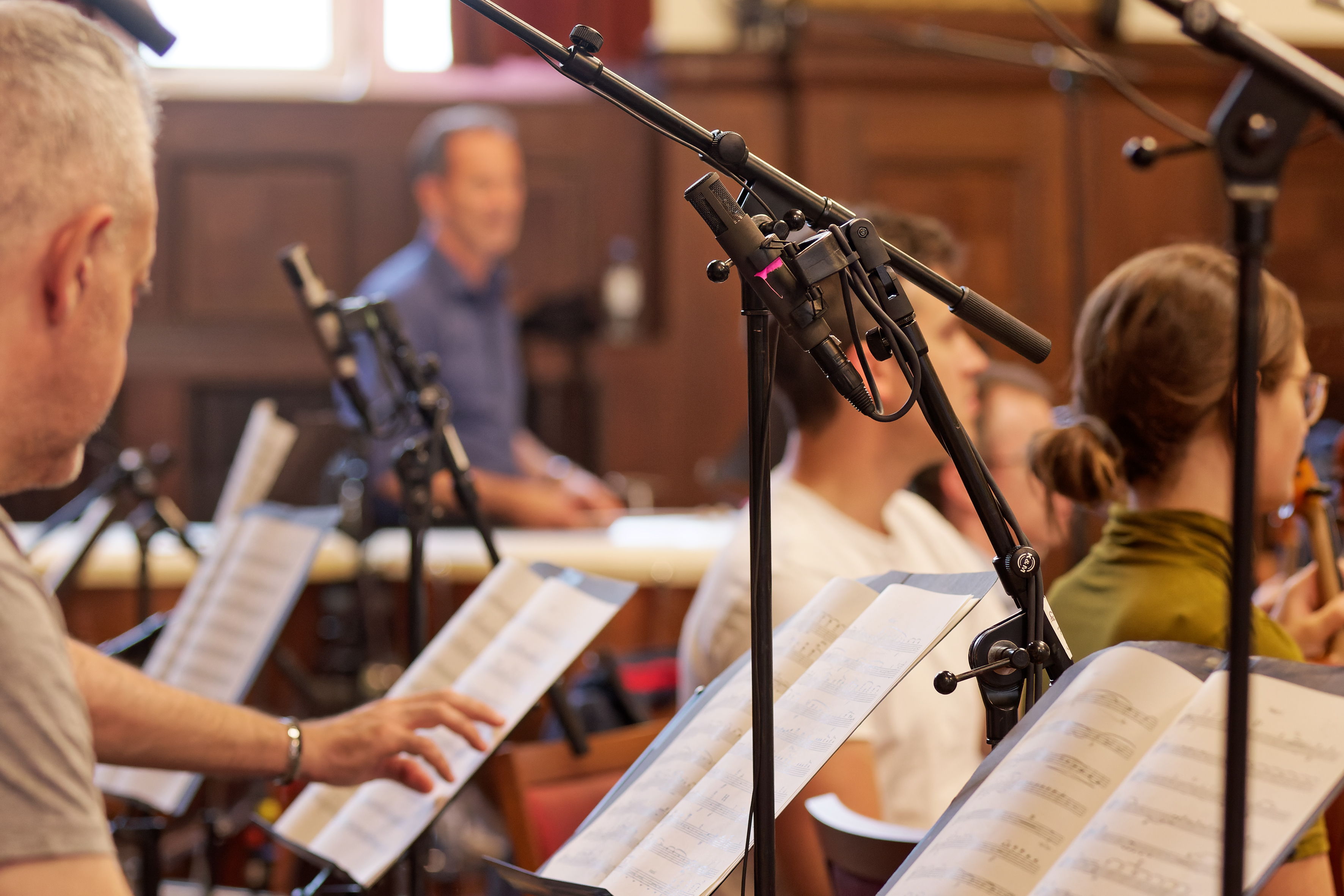
The percussion instruments and some other sections of the orchestra were miked with Sennheiser MKH 8040: “Their sound is similar to that of the MKH 800 TWIN, which makes it easy to combine the two microphone models,” says Oppermann. “After all, it’s not my aim to use individual microphones for reasons of sound aesthetics because they shape a certain instrument signal in the desired way. Instead, my focus is on the big picture, using the microphones as tools to capture the sound in the Meistersaal as realistically as possible.”
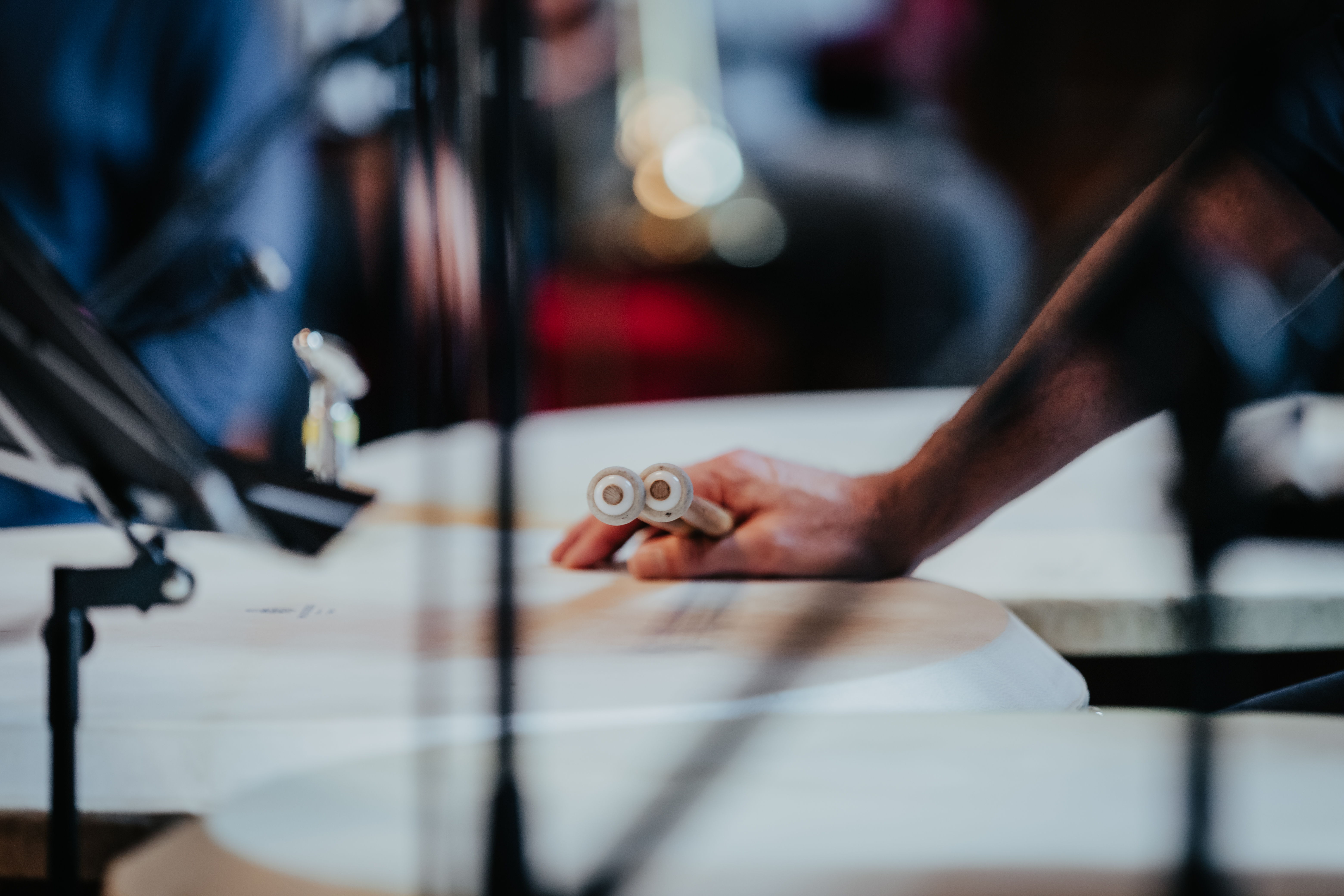
The long-established MKH 800 TWIN were supplemented by new MCM electret microphones from the Neumann portfolio, which were used for close-miking various instruments. “These compact microphones are an excellent solution if the musicians need to move relatively freely and if we still want to capture every single detail of their performance in a continuously high quality,” says Oppermann.
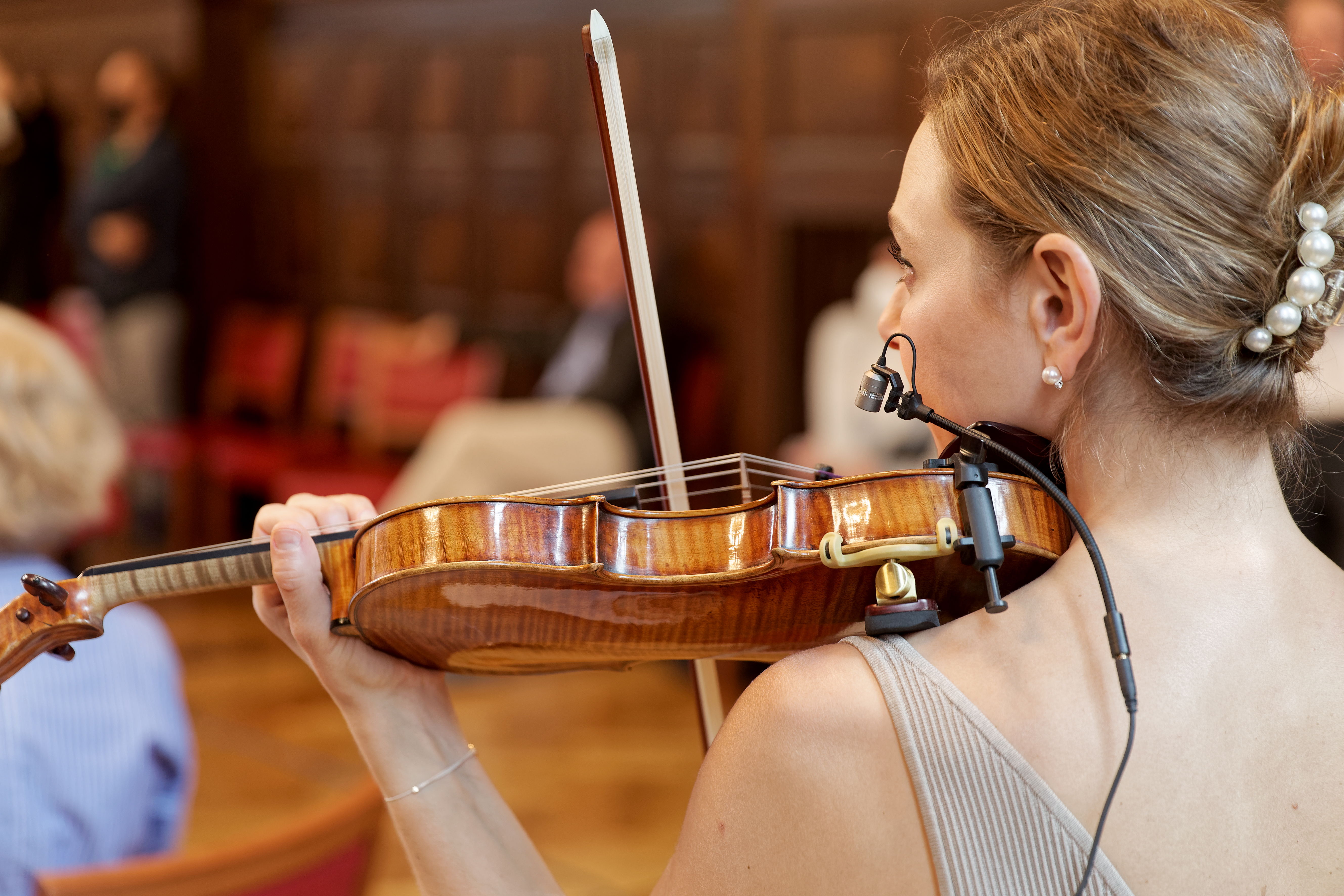
The Miniature Clip Mic System (MCM) was specially developed by Neumann for close-miking acoustic instruments. The Neumann KK 14 electret capsule has a cardioid pick-up pattern and can handle extremely high sound pressure levels, which means that there is no problem using it on loud instruments. The housing of the KK 14 capsule is made of titanium.
A key component of the MCM system is its large range of mounting solutions, which enable the microphone capsule to be attached both quickly and reliably to any instrument. The clips do not damage sensitive surfaces, thus avoiding awkward discussions with the musicians who are very protective of their valuable instruments. The SH 150 miniature gooseneck ensures flexible positioning of the KK 14. The high-end output stage (MCM 100) allows the Neumann microphone to be used with a cable if there is no wireless connection available.
Despite the large number of microphones, phase problems are not an issue in Oppermann’s recording approach: “I don't need time alignment because there is no reference listening point later in the VR environment,” the audio specialist explains. “If two musicians are sitting close together and crosstalk occurs between their individual microphones, the law of the first wavefront applies – which means that you can always correctly assign the direction.”

(Listening) freedom for the individual
While the listeners equipped with a VR headset and headphones explore the virtual environment in which they can move around freely, the sound adapts to the perceived conditions in real time. This enables them to become immersed in the artistically created world, thus resulting in realistic sensations. Visual and acoustic impressions merge to create an immersive experience – and only someone who has experienced this for themselves will fully understand why so many people have become wildly enthusiastic about VR.
Instead of hearing a finished mix, which, after all, always represents someone’s interpretation of the sound, listeners can experience the freedom to decide for themselves at which position they want to listen to a performance in front of, next to, or behind the orchestra or even right in the middle of it – a moving and dynamic experience with six degrees of freedom (6DoF) in a three-dimensional space.
“Making the recordings for “Future Presence” involved discovering a lot of new rules that are necessary in order to represent sound sources as realistically as possible in a VR context and also to be able to move around them. This kind of distance modelling isn’t possible with conventional recording techniques,” says Oppermann. “Rules that work for stereo or 5.1 surround can’t be applied to VR situations. In a way, you could say that audio recordings in a VR context might possibly be more forgiving of minor mistakes in miking, but there are many other aspects that need to be considered all the more intensively.”
Volumetric capture
In Berlin, the MCO musicians were visually recorded by means of volumetric capture using the latest generation of Apple iPads. To keep the consumption of resources at a reasonable level, Oppermann uses an abstract-artistic representation of the musicians at 15 frames per second – the result works very well and gives an indication of how things might develop in the future as computing power increases.
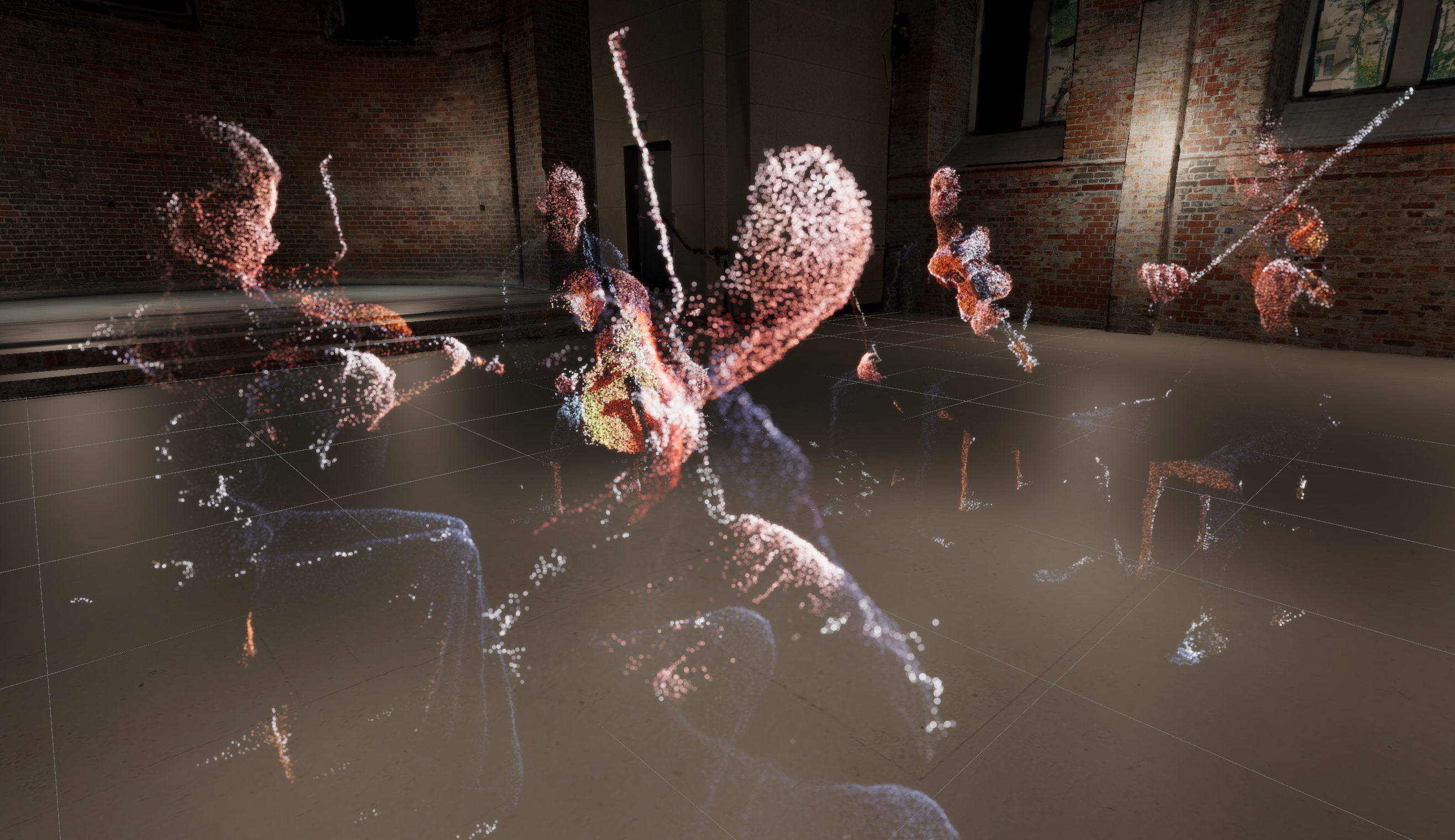.jpg)
To combine the video content and audio recordings in the way he wants, Oppermann uses the game engine Unity, which is operated as a runtime and development environment with specially programmed extensions to suit his special purposes. “When you later move around the virtual space within the orchestra and find yourself near the first violins, while the second violins are playing on the opposite side, you will primarily hear signals from the Sennheiser MKH 800 TWIN microphones,” Oppermann explains. “But if you move closer to the violins, the listening experience will merge seamlessly into the signals from the Neumann MCM close miking set-up. In other words, there’s a lot going on behind the scenes in terms of audio management and dynamic crossfading depending on the listening position.”
Interview with Henrik Oppermann
Surprisingly, a conventional main microphone set-up with two Sennheiser MKH 800 TWIN in an A/B arrangement was also used in the Meistersaal in addition to numerous microphones distributed in and around the orchestra. This main microphone was mounted on a large stand and positioned in the centre in front of the orchestra. Two MKH 8040 were also used on the far left and far right to add further ambience components.
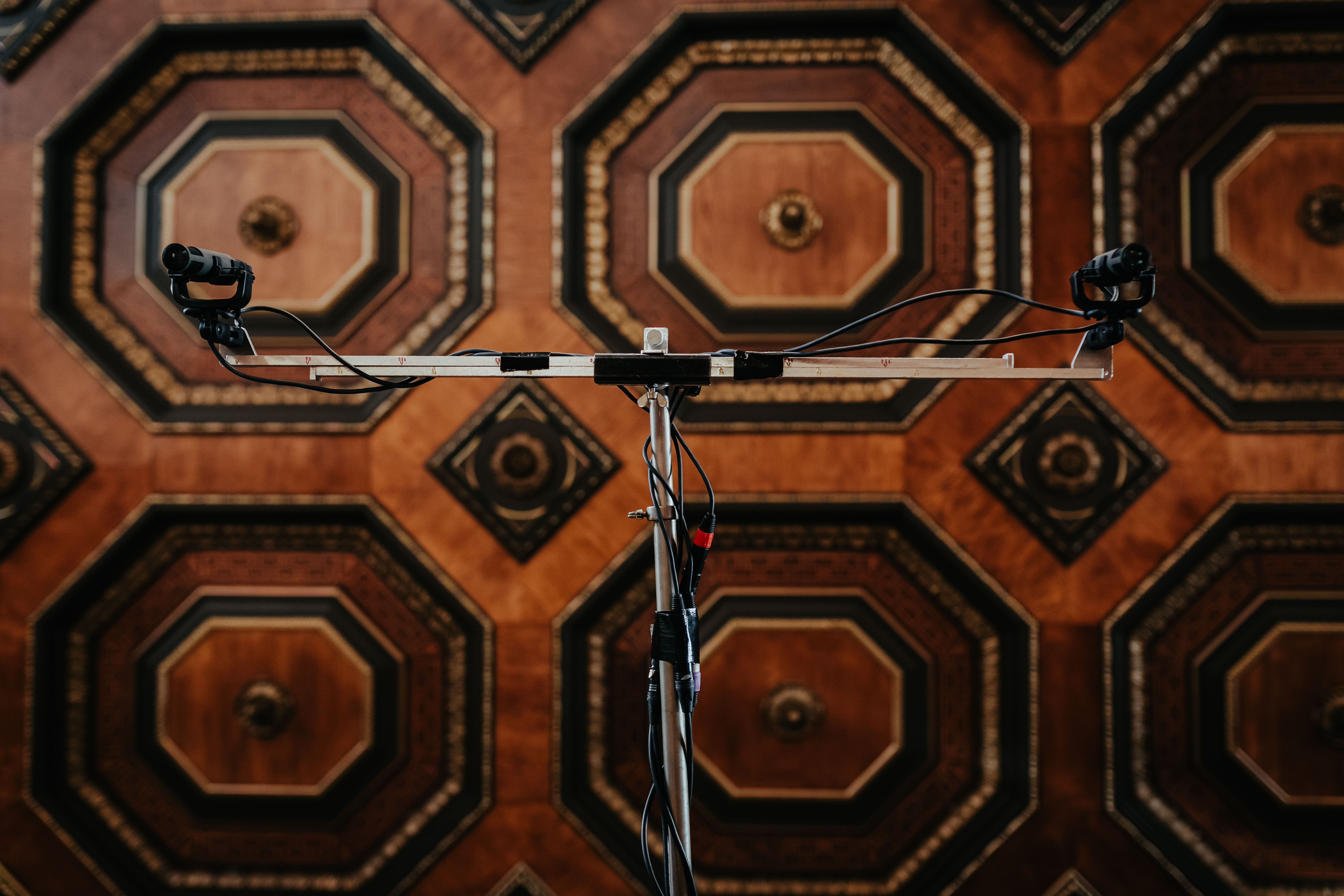
Oppermann: “The main microphone is primarily intended for the tonmeister so that he can get an overall picture of the situation. The signals of the main microphone are recorded, too, and I might use them as ambience later in the post-production process. However, the spatial impression is mainly the result of interaction between all the microphones involved. I try to keep all possibilities open and don’t decide what works together best until late in postproduction. “Future Presence III” is an experiment, and at the moment I can’t predict for certain what will happen during mixing. But one thing I can definitely say is that I still have an awful lot of work to do before I can achieve the effect of a completely natural sound field…” (grins)
In a small room next to the Meistersaal, you had the opportunity to listen in to some of the Mozart recordings from the Kultur Büro Elisabeth that had already been processed and you could also visually immerse yourself in the VR environment by wearing a special headset. What exactly did you hear through the headphones? It surely wasn’t a typical stereo signal…
Oppermann: “Reproduction in the headphones is binaural. An object-based system works in the background and its output is translated binaurally for playback. For the Mozart quintet, I used Rapture3D from Blue Ripple Sound to do this. For the orchestral recordings from the Meistersaal, I still have to decide between Rapture3D and dearVR UNITY, as both have their specific advantages.”
You used the Neumann Miniature Clip Mic system to achieve a clear separation between the individual instrument signals.
Oppermann: “When you listen in to the signals from the Neumann KK 14 electret capsules, they are clearly separated from the overall sound of the orchestra and focus on the individual instrument. In many cases, I positioned the capsule even closer to the instrument than I would in other contexts, because later you will only hear these signals when you’re at a distance of one metre or less from the instruments in the VR environment.”
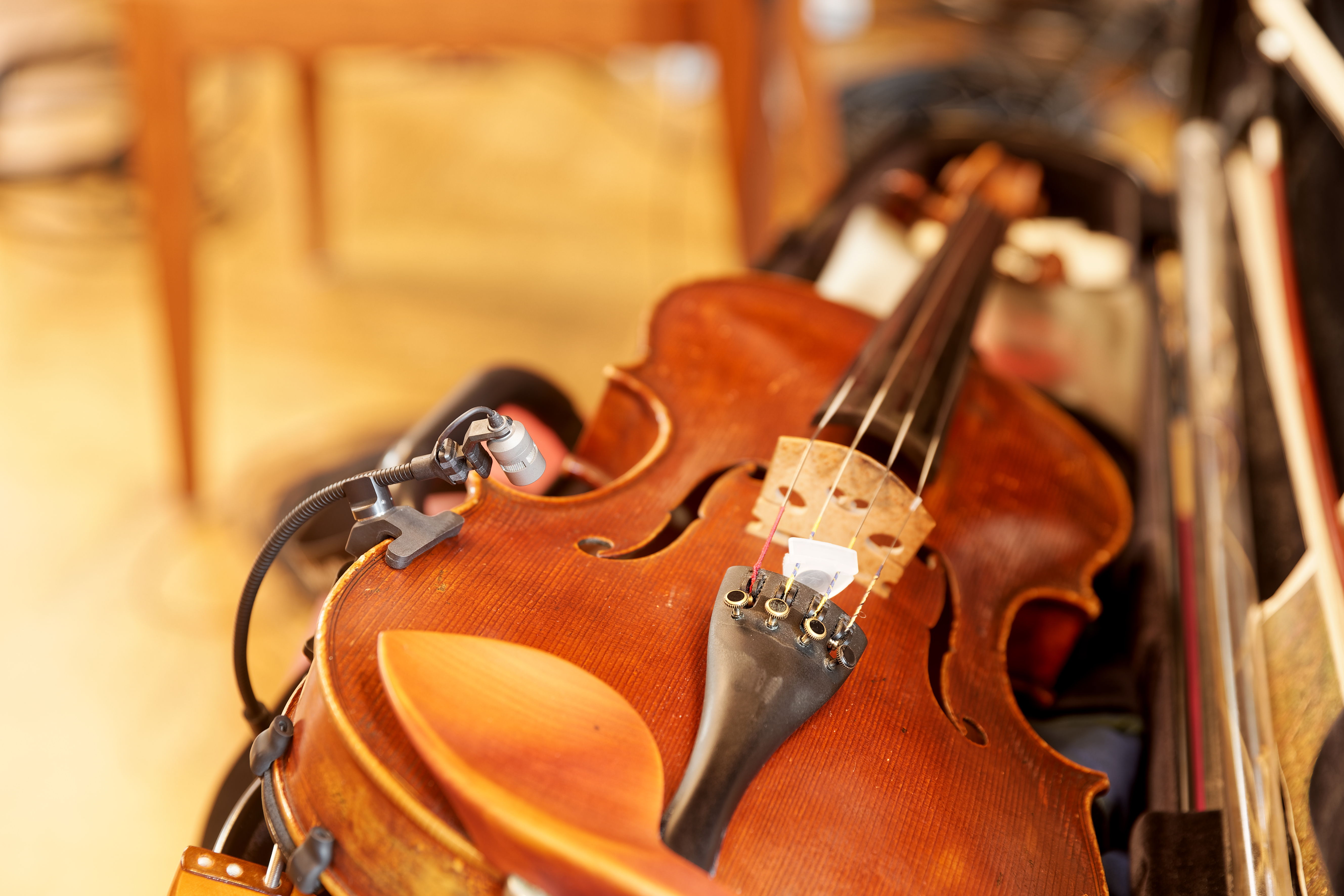
Ideally, the space for the subsequent installation would need to be exactly the same size as the Meistersaal.
Oppermann: “That’s right, although the recordings can be played in any room that has enough space to walk around in. I make my recordings in such a way that I can also overlay them with a different acoustic environment later on – it would probably be difficult if the environment is much smaller, but enlarging it works without any problems.”
The output consists of Wave files with non-compressed audio signals without a decoding process that results in latency. Does the sound experience depend on the headphones used in connection with suitable amplifiers?
Oppermann: “My favourite is the Sennheiser HD 660S, because, in addition to its wide frequency response that extends to both high and low frequencies, it also has a relatively low impedance of 150 ohms and can therefore easily be driven by external amplifiers.”
How can you prevent visitors from bumping into each other when they are wearing their VR headset and headphones and moving around in the installation completely detached from their real environment? After all, the Mozart quintet was designed as an experience for individual people.
Oppermann: “I expect it will probably be the case later on that up to four people will be able to move around the installation at the same time. They will be able to recognise each other visually in the VR environment when wearing their headsets.”
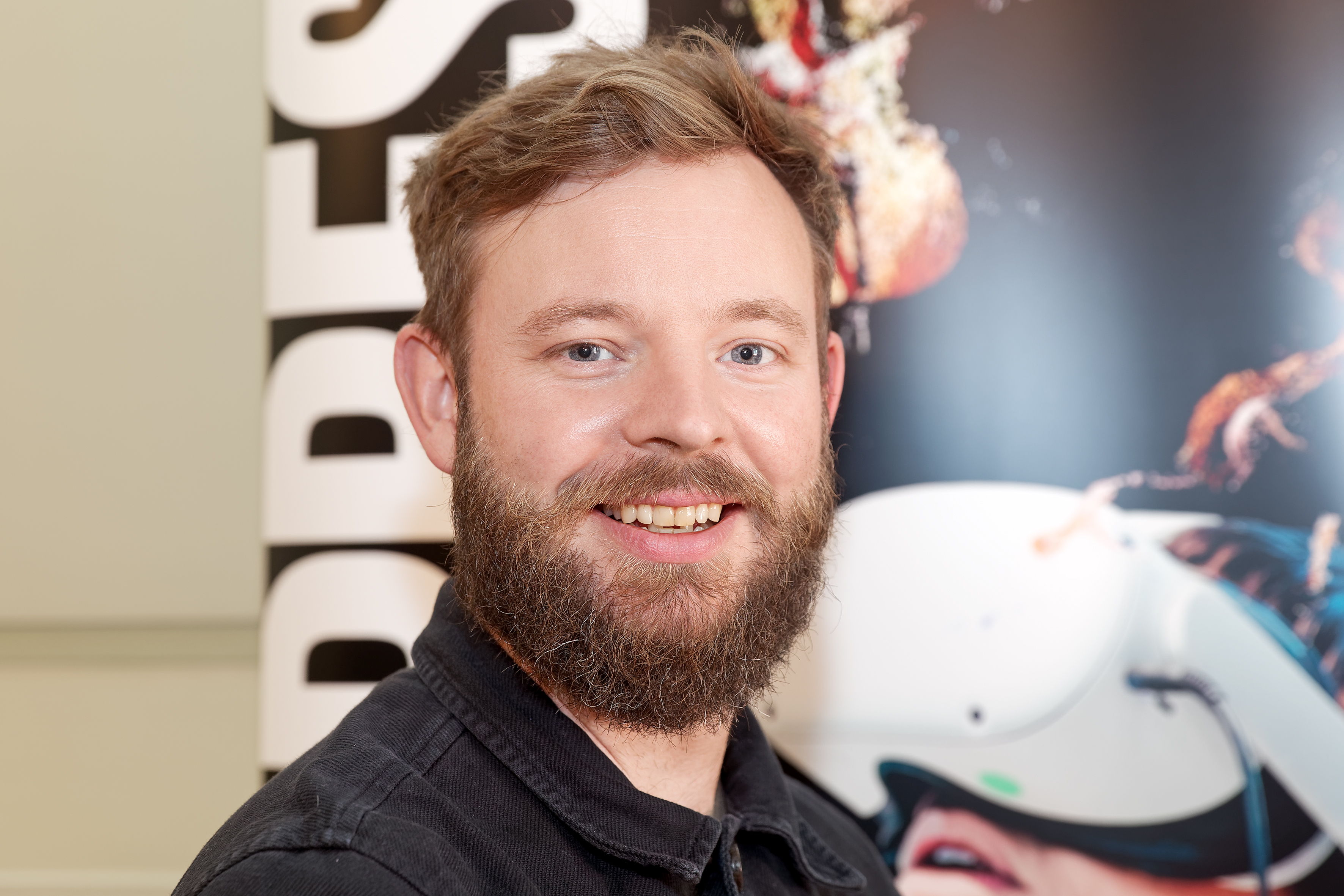
There’s no question that it’s absolutely fantastic to be able to stand among the musicians, or even move freely around the orchestra. But isn’t it generally the case that many people would prefer to sit in the best seat in a hall with good acoustics, or are happy to rely on the skills of the tonmeister in providing the optimum recording?
Oppermann: “It’s perhaps a question of personal perspective. If I’m a music student and my chosen instrument is the cello, for example, a VR recording gives me the opportunity to experience an outstanding cellist up close and I can discover how their playing connects with other musicians within the orchestra. Normally, something like that just wouldn’t be possible. In addition to this, I think that all listeners will be given a new perspective on the work of an orchestra, and this might mean that they will experience going to a concert in a different way and perhaps more intensively.”
One recording, many formats
At the time of the multidimensional recording, it had not yet been decided whether the recordings in the Meistersaal would be used beyond the installation that had already been planned. Oppermann points out that sufficient signals had been recorded to enable him to derive every standard format from the individual tracks – mono, stereo, quadraphonic, surround sound in all variations with or without representation of a height level, other multichannel loudspeaker set-ups and binaural playback via headphones are all possible.
“With these recordings in the Berlin Meistersaal, I was able to realise a long-cherished dream. A lot of heart and soul went into this project,” says Oppermann. “It is a lot of work, but I made many new discoveries, and it has given me a great deal of new knowledge.”

A lasting impression: an orchestra as an immersive experience
VR needs to be experienced in order to really understand what it is all about. Texts, photos and videos can only partially describe the experience. “With projects like “Future Presence”, I try to bring people closer to the phenomenon of sound and let them experience it in all its dimensions,” says Oppermann, expressing his hope that people who experience a concert in VR will perhaps also listen to a real concert in a different way in the future. “Playing in an orchestra is fundamentally an immersive experience,” says Oppermann. “With VR and immersive sound, even people with no musical background can now experience it themselves.”
Here to stay!
The results of the recordings in the Meistersaal are expected to be made available to the general public in April 2023 as part of a special installation at the “Radialsystem” culture and event centre in Berlin Friedrichshain, where visitors equipped with VR headsets and headphones and supported by a millimetre-precise tracking system can enter a virtual (sound) reality of the highest quality. The installation will be supplemented by live performances, promising interesting insights into a real orchestra and a VR representation. The aim is by no means to make going to live concerts obsolete, but to open up new visual and listening perspectives on music.
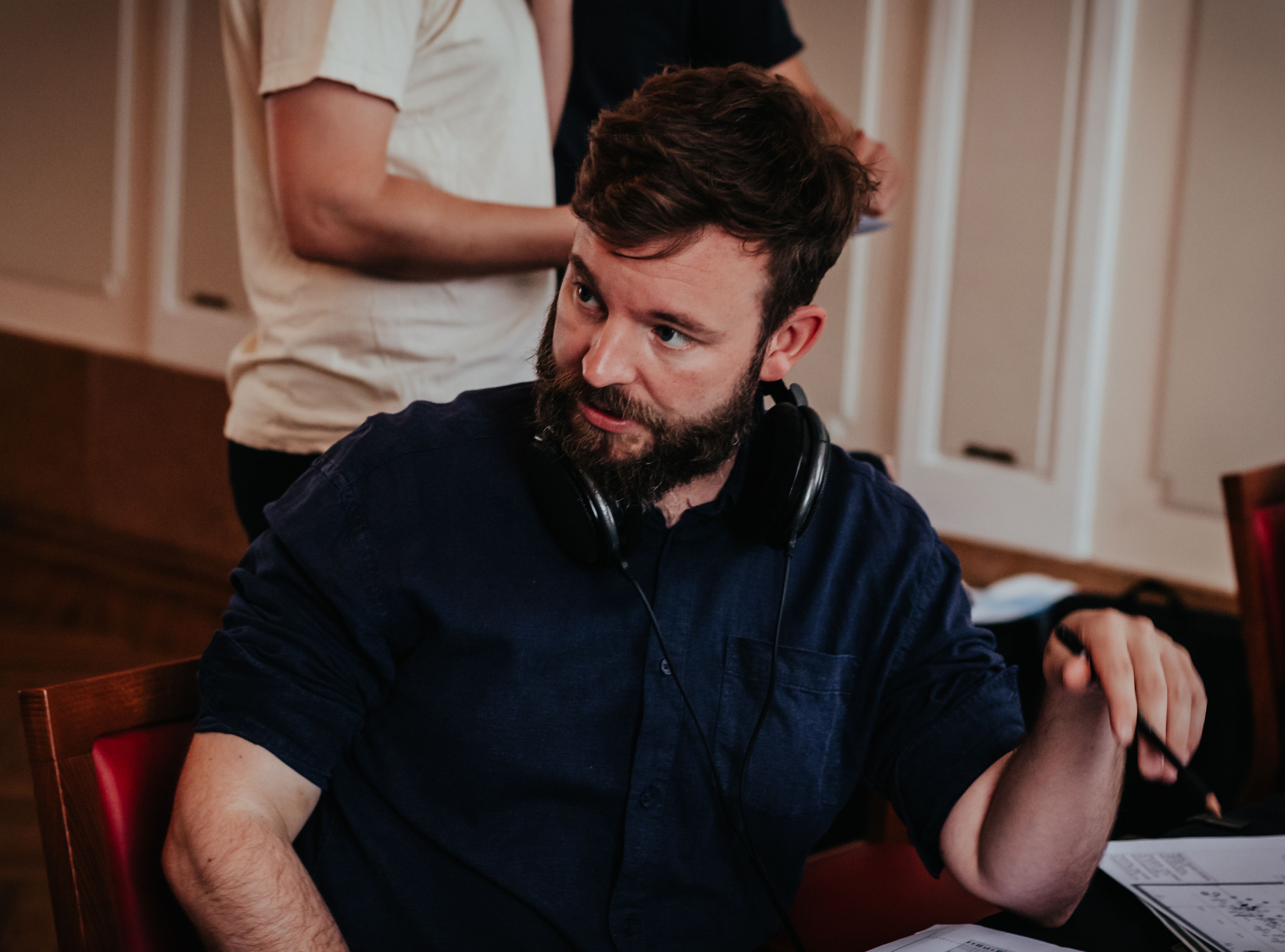
When further progress is made in the field of augmented reality (AR), one day it might even be possible to experience the recording sessions of July 2022 directly in the Meistersaal itself, with a video and audio plane overlaid onto the real concert hall. “We are prepared for the future,” says Oppermann with confidence. “This is not a passing trend; immersive audio is here to stay!”
(Ends)
The high-resolution images in this press release and other images can be downloaded here.
About the Mahler Chamber Orchestra
The Mahler Chamber Orchestra was founded in 1997 and sees itself as a “nomadic collective” that unites for specific tours and special projects in Europe and throughout the world. It is governed collectively by its management team and orchestra board. The MCO basically consists of 45 members from 20 different countries. Decisions are taken democratically with the participation of all musicians – in accordance with its vision of being a “free, self-determined and international ensemble”. The characteristic sound of the MCO is the result of an intensive artistic dialogue that is marked by a chamber music style of ensemble playing. The MCO’s core repertoire ranges from the Viennese classical and early Romantic periods to contemporary works and world premieres. www.mahlerchamber.com
Press Contact
Rik Willebrords
rik@mahlerchamber.com
Phone: +49 (0)30 41 71 79 21
About the Sennheiser Group
Building the future of audio and creating unique sound experiences for our customers - this is the aspiration that unites the employees of the Sennheiser Group worldwide. The independent family-owned company Sennheiserwas founded in 1945. Today, it is managed in the third generation by Dr. Andreas Sennheiser and Daniel Sennheiser, and is one of the leading manufacturers in the field of professional audio technology. Within the Sennheiser Group are Georg Neumann GmbH (Berlin, Germany), manufacturer of studio-grade audio equipment; Dear Reality GmbH (Düsseldorf, Germany), known for its binaural, Ambisonics, and multichannel encoders with realistic room virtualization; and Merging Technologies SA (Puidoux, Switzerland), specialist in high-resolution digital audio recording systems.
sennheiser.com | neumann.com | dear-reality.com | merging.com

Phang Su Hui 彭素惠
Communications Manager, APAC, Sennheiser Electronic Asia Pte Ltd



